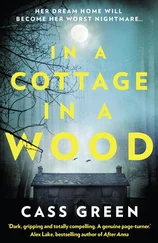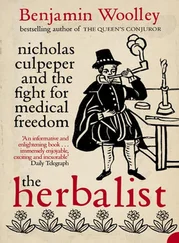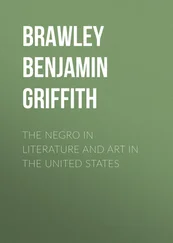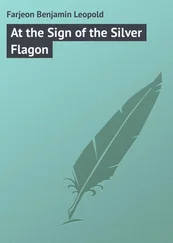Before long, I was involved more closely in Jim’s practice. He had failed to convince Max Eversholt, his only benefactor, that the empty-room paintings (‘absence portraits’, as he called them) were worthy of a solo exhibition, and so had backtracked into more familiar territory. I would find subjects for him by taking photographs of people on the street: skiffle groups rehearsing outside coffee bars, bus conductors walking home, rayon-clad girls in cinema queues, boys playing dice on the kerb. If Jim liked the look of someone in these pictures — a particular smile, a dour pout, whichever small quirk captured his imagination — he would pay me a few shillings for the photograph and spend the day copying it in oils. On top of this, I organised his charcoal studies into sketchbooks and dated each drawing so he could track the development of his ideas — he liked to tell me I was keeping a record of his downfall, and I liked to tell him to stop being so bloody miserable.
My time as his assistant lasted nine months. If anyone had deigned to suggest that I was falling in love with James Graham Culvers during that period, I would have protested. Back then, Jim was quite determined to conceal what handsomeness he had with lax grooming and booze. He could go for days without bathing and refused to wash his hair when he was working on a painting. There were times when his sour body odour infused the studio to such a degree that it overwhelmed even the turpentine. After a new work was finished, he would give his hair a close trim with the clippers and saunter in with shaving foam still caught in his ear-folds.
Idle chatter, as a rule, was wasted on Jim. If models began conversations about their holidays, he would purse his lips and nod, letting them trail off into monologue. But he would consider his reflection in the windows as I prepared his easel in the mornings. His eyes were too fat, so he said (‘like a sheep’s’); his front teeth too far apart, his chin too big, his nose protuberant (‘like a bloody outboard motor’). It was true that the constituents of his face were quite unusual, but there was still a pleasant balance to them in assembly. After a while, I came to understand that his complaints spoke more of connoisseurship than of vanity. He was intrigued by imperfections, could wonder for hours at the tessellated cracks in a china plate, at brush-hairs preserved in the gloss of a doorframe, at silly misprints in the newspaper. He believed that if something was flawless, it was artificial and suspicious. ‘All these people you’ve been taking pictures of are much too pretty,’ he would say. ‘Next time, bring me something else. I want ratty hair and scars and bad tattoos. This lot look like they’ve dropped out of a magazine. Even the bus conductor’s got long eyelashes. I’ll have to paint him ten times uglier.’
I came to learn things about Jim that only a wife should have been privy to. I knew the rumbles of his gut, the corns on his feet, the tunes he whistled in the lavatory and the sections of the paper he was partial to. I found out that he had allergies — to peanuts, rhubarb, peaches, crab — and could tell when he had partaken of these foods, even if he swore to me that he had not (the husky throat and rheumy eyes gave him away). He had a joke about Whistler’s mother that I must have heard a hundred times, and there was an anecdote he told about his childhood that always included the same phrase: ‘My old man, you see, was Anglican, and he wanted me to go into the ministry. .’
He was not the sort of man for whom you felt an immediate attraction. The first sight of him did not steal your breath or weaken your knees — and, quite frankly, women of my generation knew better than to expect such things. Instead, over time, he quietly detuned the strings of your heart, until his peculiar key became so familiar that you believed it was the only one. And if my life as a painter had begun in the backcourt of my parents’ tenement, then I owed the rest of my career to Jim Culvers. Being his assistant gave me the chance to develop my own work in privacy, and, without him, those paintings might never have been seen at all. I did not recognise the depth of my affection for him until I no longer had a duty to include myself in his routines.

It was on one of those routine days in January — cold and grey and mizzling — that I heard the bell of the studio ring and went out to let Jim in. I expected he had forgotten his keys again, but when I opened the door I found him standing with three burlap sacks about his ankles. ‘Help us with this stuff’ he said, and carried two of the sacks in with him, leaving me to manage the fullest. It was crammed with several tins of what I thought was ordinary house paint. The worn white labels said:
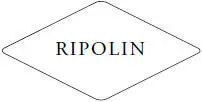
I hauled them into the studio and Jim made me stack them in a pyramid near the window. ‘If it’s good enough for Pablo,’ he said, ‘then it’ll do for me. Go on, open one up. I want to see what state it’s in.’
I did as I was asked, setting a can on the floor, prising the lid off with a spoon. An ammoniac scent rushed out. The oil varnish had separated from the pigment and made an oozing brown lake on the surface. ‘What is this stuff?’ I said.
He crouched before it, sizing up the swirl of chemicals before him. ‘Magic in a can,’ he said. ‘Everyone used it before the war — we used to joke about Picasso spreading it on toast — but then they had to shut the factory down and you couldn’t find it anywhere. Doesn’t look too bad, this, considering. And I got the job lot for nothing!’ I was about to stir it, but Jim slapped my hand away: ‘ Ttt-ttt-ttt. Hang about.’ He stood up. ‘We need to test it. See if it’s still usable. It’s been standing around in a basement for the past twenty years. The pigment will be fine, I reckon, but that binder looks a bit mustardy; we’ll have to siphon it off somehow, or try mixing it in with the tubes we have here.’ He went and unhooked his coat from behind the door, putting it back on.
‘You’re leaving?’
‘Well, I carried that lot all the way from Drury Lane. It’s worn me right out.’ He frisked his pockets for his wallet. ‘Thought I’d just nip home and sleep it off.’
I knew Jim well enough by then to know that ‘sleep it off’ meant ‘pass out drunk’. It was not yet ten o’clock, and there was no reason to assume that he would return before dark.
‘While I’m gone,’ he said, ‘do us a favour and try the stuff out a bit, eh? Have a play with it and see what it can do. Use as many canvases as you like, but don’t waste the paint — for all I know, they’re the last ten pots of it in London.’
I spent that entire day in the thrall of Ripolin, experimenting with its qualities. It was a vexing, stubborn material that had to be coaxed into obedience. I tried a number of methods with limited results, draining one of the tins, until I found the perfect balance in the mixture: two parts oil paint, two parts turpentine, one part Ripolin, thoroughly stirred. This produced dense blocks of colour in its own right, but the trick was to undercoat the canvas with a lot of white gesso. When I did this, the paint became more opaque and also more fluid. It enabled me to hide the brushstrokes and, at the same time, allowed for subtleties of gesture that gave each image a fuller character. Every colour had resonance, a kind of visual hum.
Jim showed up the next morning, headsore and bedraggled. He did not appear to remember asking me to test the Ripolin — or even that he had acquired it — because he just went about his typical routine. It was only after he finished his coffee that he noticed the pyramid of cans and saw the canvas leaned against the wall, turned inwards. ‘Did you manage to get to grips with that stuff then?’ he asked, as though it had been there in his studio for weeks.
Читать дальше





